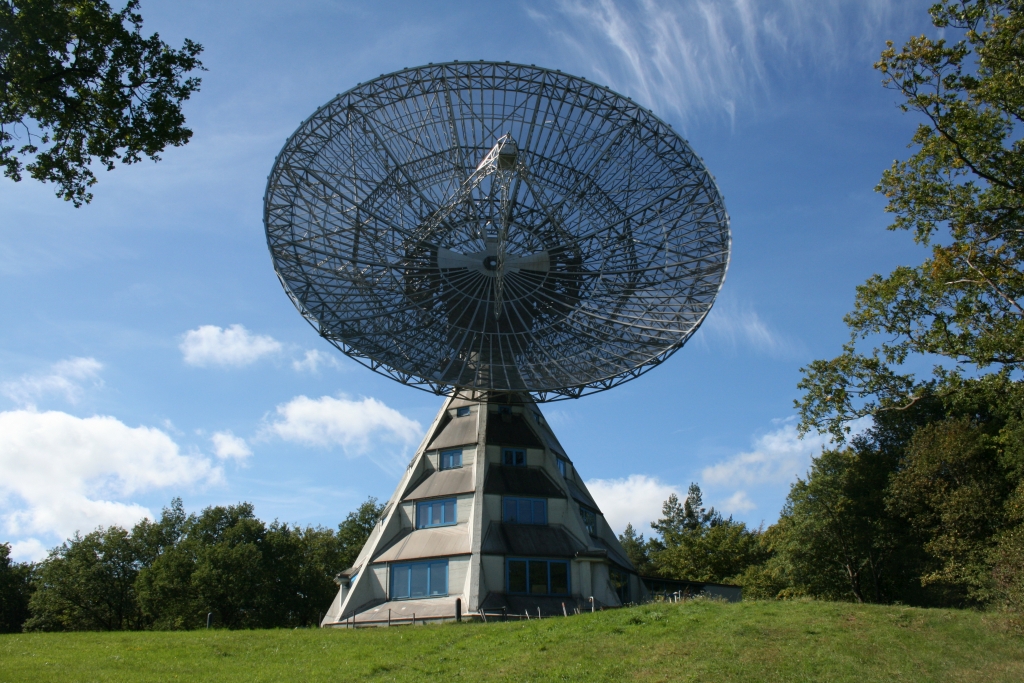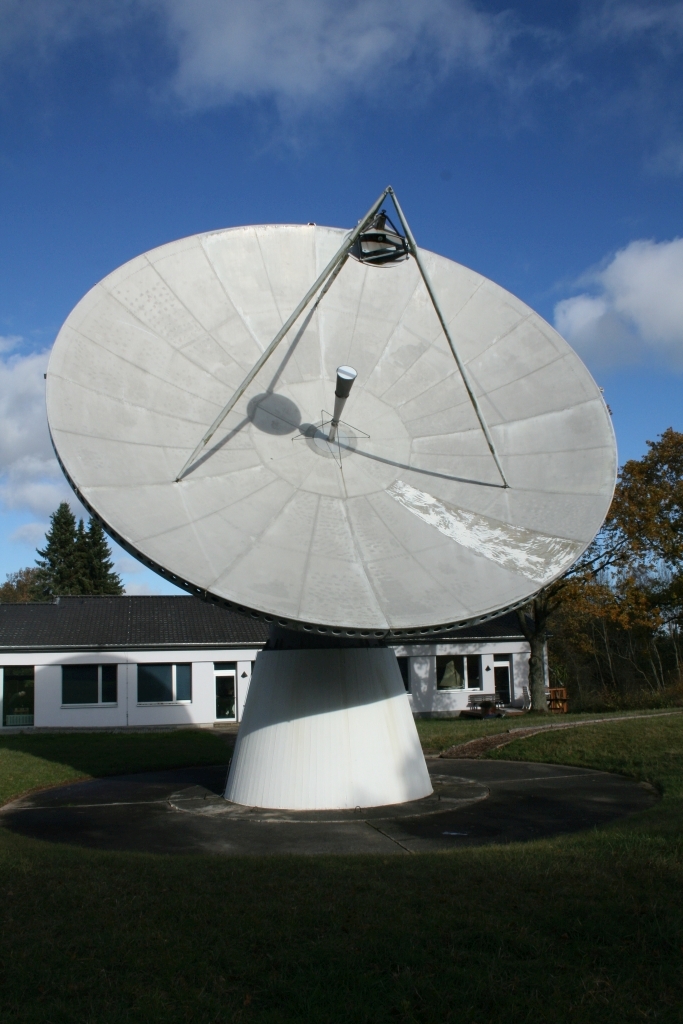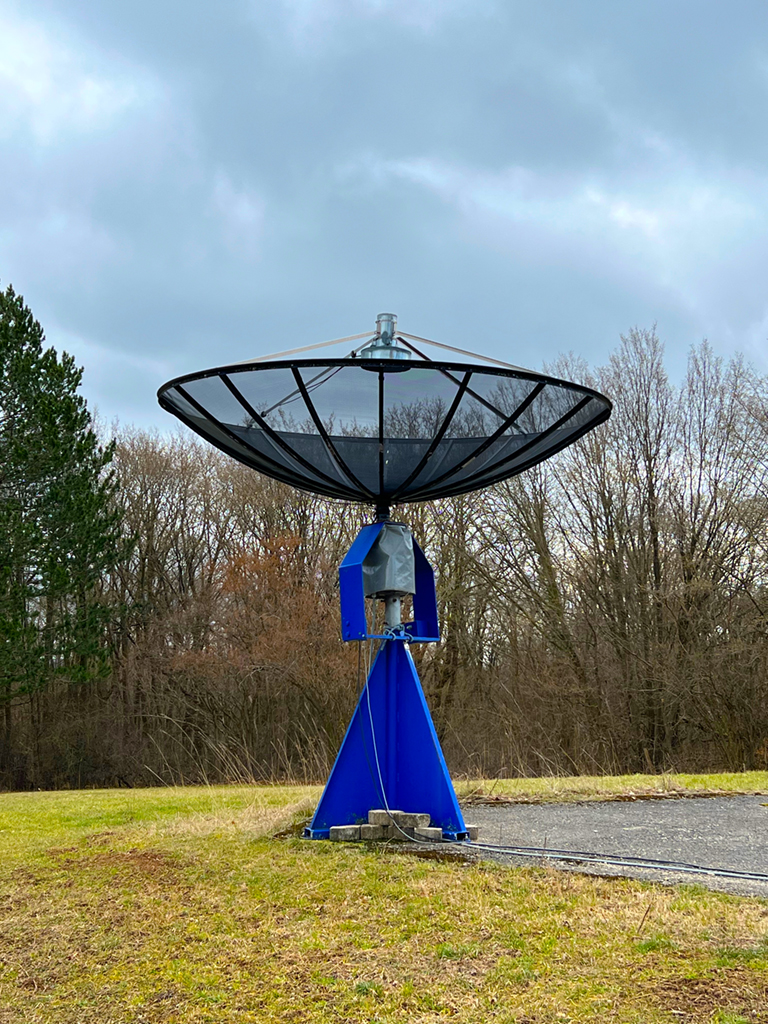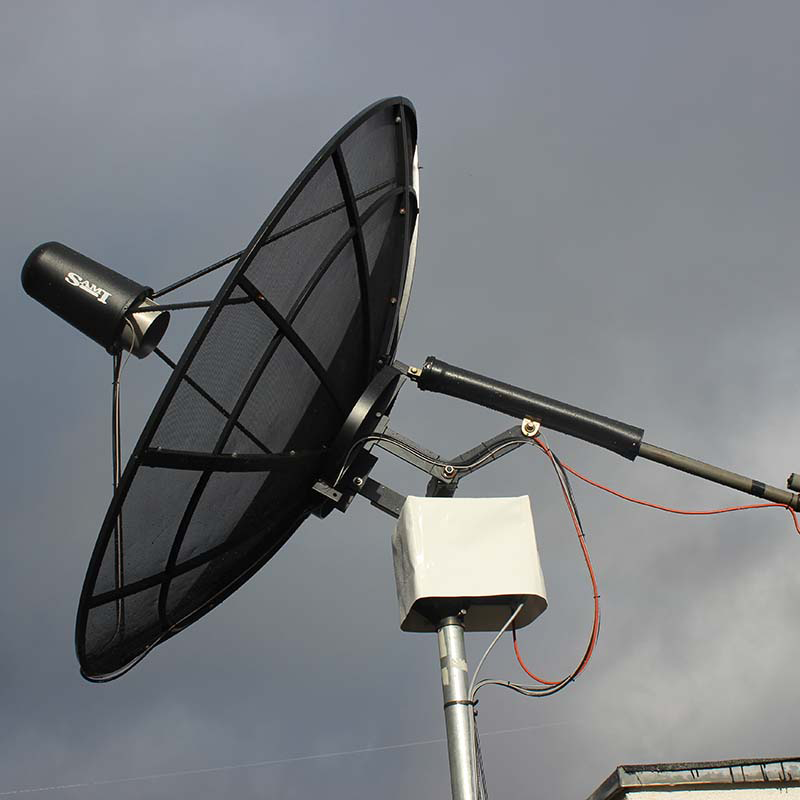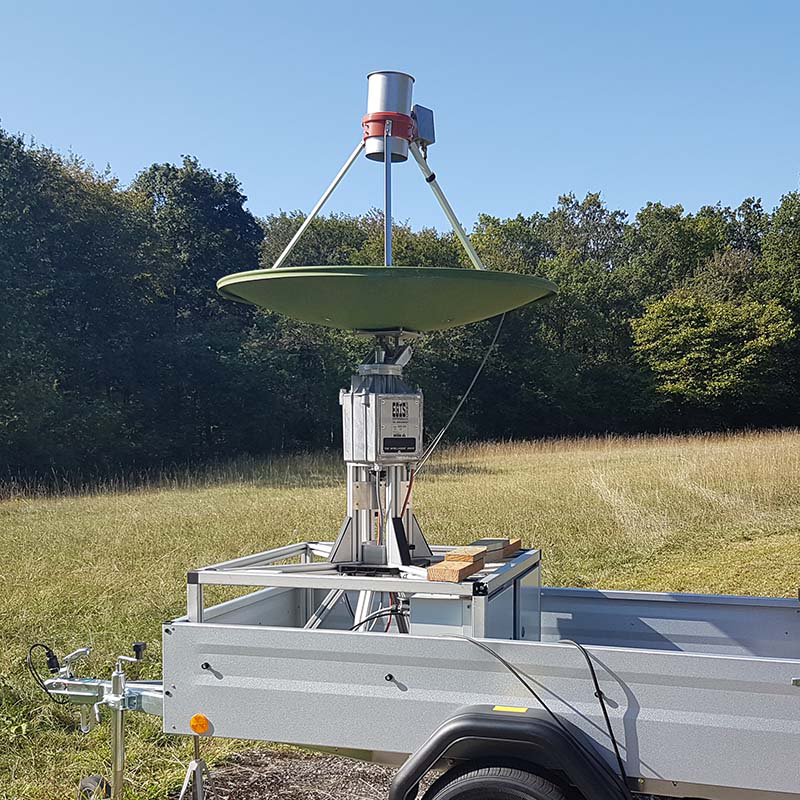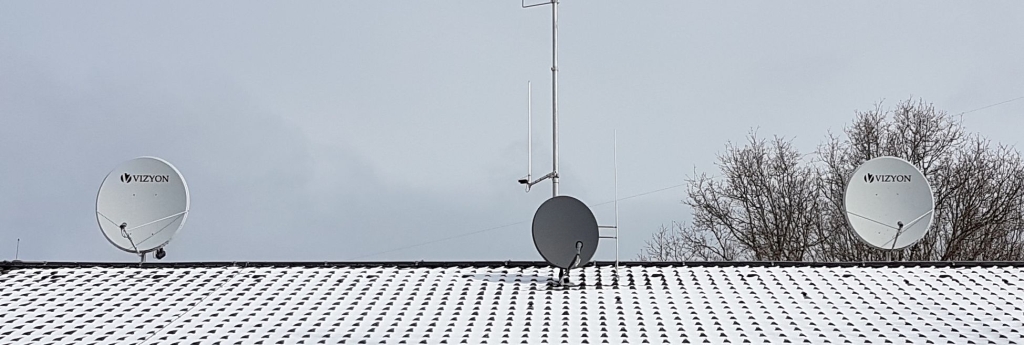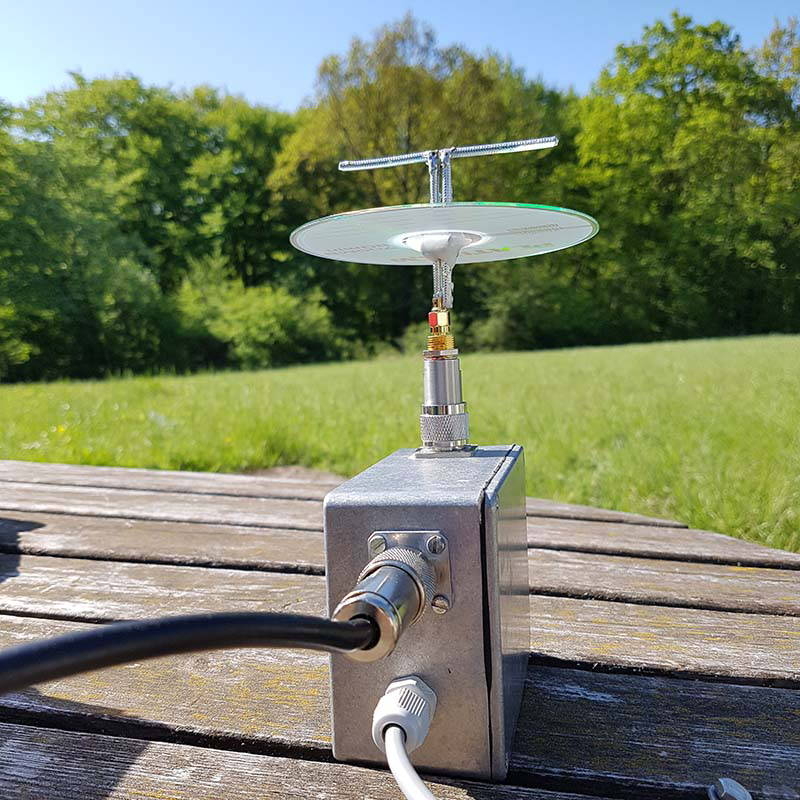The radio observatory “Astropeiler Stockert” comprises several radio telescopes, which we briefly introduce here. Further information can then be found in the respective links.
Instruments
25-m-Telescope
The 25-m-Telescope is the largest instrument and the landmark of the facility. It is equipped for reception in the 1280-1430 MHz, 1600-1720 MHz and 700-800 MHz ranges. It is used for scientific work and for practical training and education. Although built in 1956, it has been updated with modern equipment and is the most powerful radio telescope in the world operated by amateurs.
10-m-Telescope
The second largest telescope in the facility has an equatorial mount and is designed to receive Ku-band and Ka-band. Astronomical masers are observed in these frequency bands. The instrument can also be converted for amateur radio in the 10 GHz range and is then used for so-called “Earth-Moon-Earth operation”.
3-m-Telescope
This telescope is mainly used for practicals and is designed for reception in the L-band. Measurements of the 21-cm line of hydrogen in our Milky Way are the main focus. To some extent, observations of masers and pulsars are also possible with this instrument.
2.3-m-Telescope
This instrument is a completely modernized former “SRT”. This type of telescope was originally developed and distributed by the MIT Haystack Observatory. This telescope is also designed for the L-band and will be combined with the 3-m-Telescope to an interferometer in the future.
1.2-m-Telescope
To meet the need of schools for “on-site” internships, this small telescope was designed and built. It is mounted on a trailer and can be driven to the individual schools. It is designed for the L-band to demonstrate the structure of the Milky Way using the 21-cm line.
2 x 1.2-m-Interferometer
This interferometer was originally built as part of a youth research project and is designed for the Ku band. However, its use now extends beyond this, as it allows the observation of a wide variety of radio sources.
Small antenna experiments
In addition to the fixed telescopes, experiments were made with small antennas that allow the observation of the emission of hydrogen in the Milky Way. These experiments are described here.

